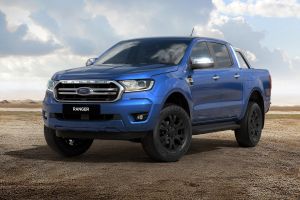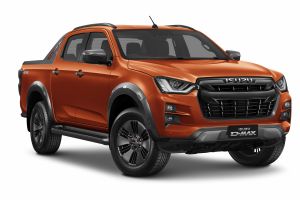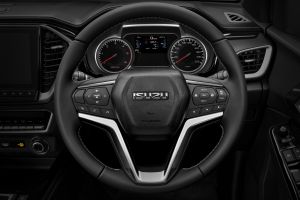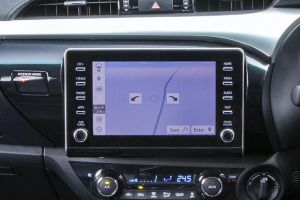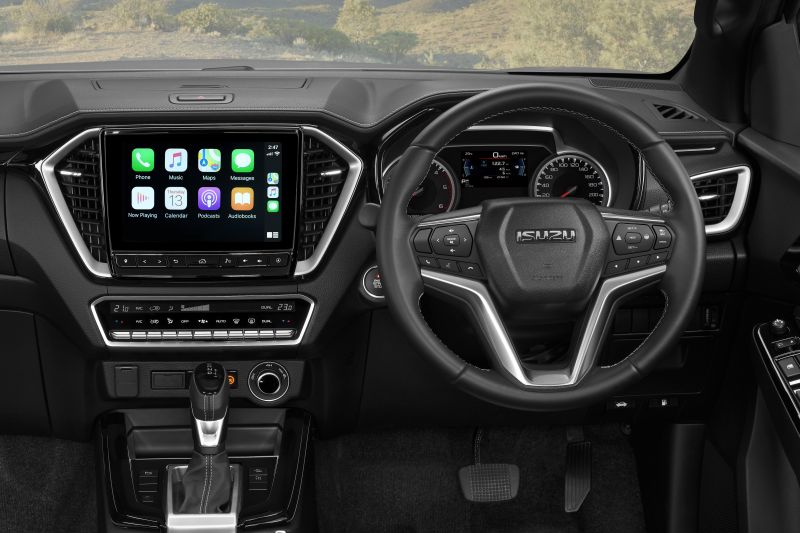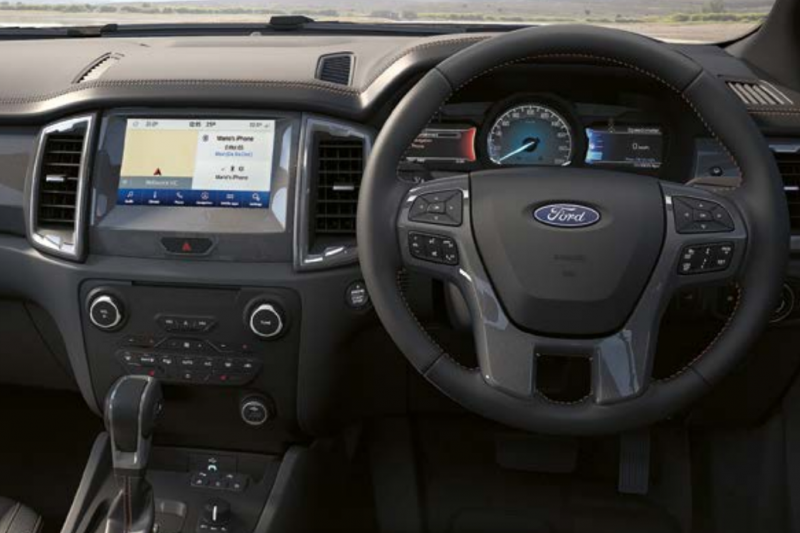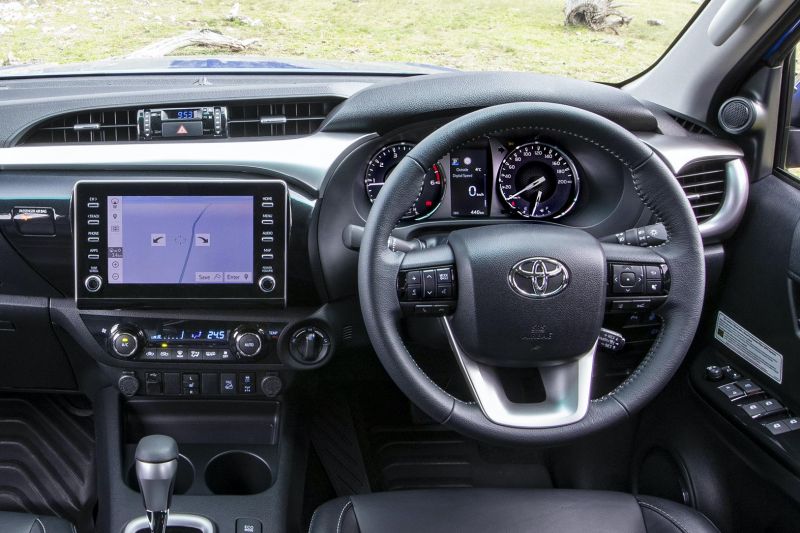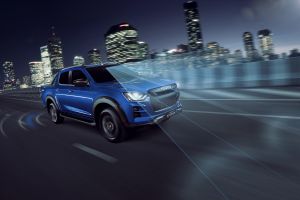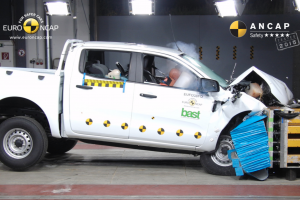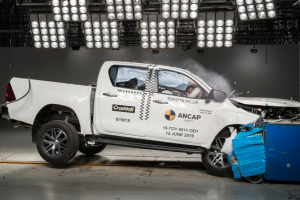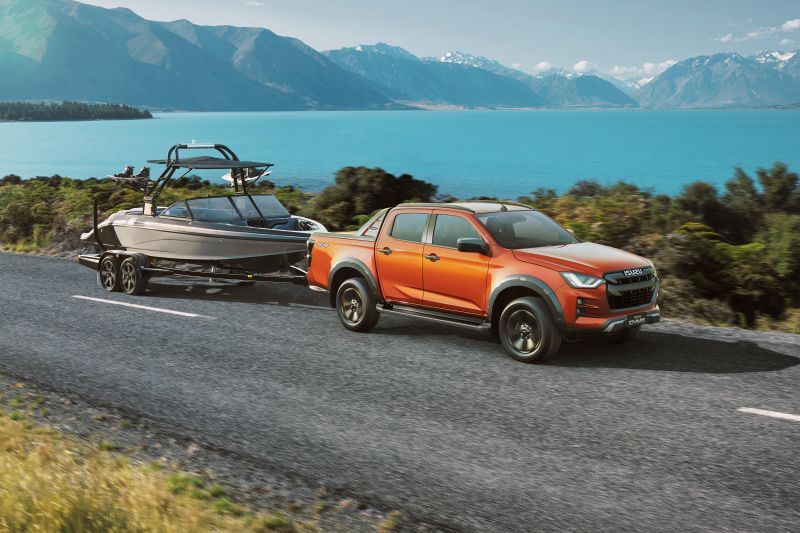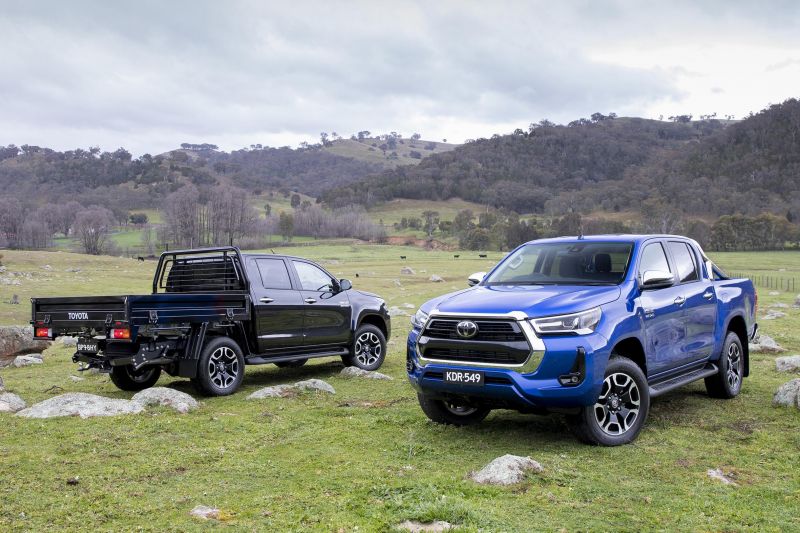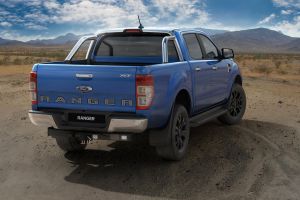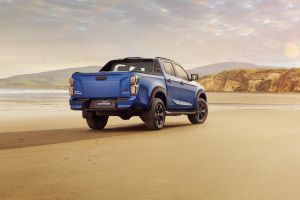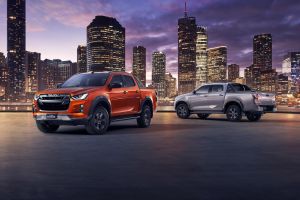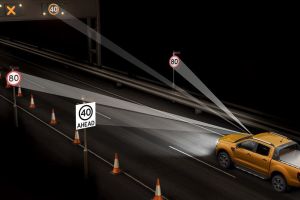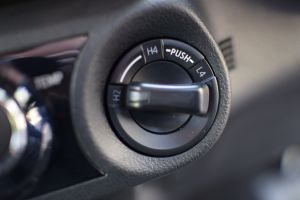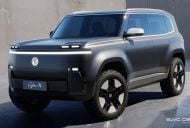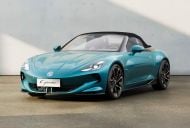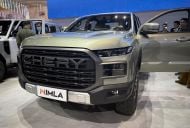It’s been a big week for the Australian ute market.
The brand new Isuzu D-Max launched, and as if to crash the party, Toyota and Ford chose the same day to detail running updates to their top-selling HiLux and Ranger.
Given most of our editorial team is based in Melbourne and therefore enduring COVID-19 lockdowns, the best head-to-head we can create at the moment is on paper.
Naturally, a proper ute comparison test at a dedicated 4×4 park is in the works too.
Knowing how much Australians love their range-topping utes, we’ve chosen to compare and contrast high-end variants – all of which are new to their respective line-ups.
There’s the Isuzu D-Max X-Terrain, the Toyota HiLux SR5 ‘+’, and the Ford Ranger XLT ‘Fully Loaded‘.
Pricing
Pricing is a thorny issue, because while ute manufacturers offer ‘list’ pricing before on-road taxes and dealer charges, they usually actually sell their offerings at campaign drive-away prices that vary with time.
For example, while the auto-only Isuzu D-Max X-Terrain wears a list price of $62,900 before on-road costs, it launches at $58,990 drive-away. It’s the latter figure you’ll pay, rendering the former utterly irrelevant.
The HiLux SR5+ grade wears a list price of $60,420 before on-roads, plus a further $2000 for the automatic transmission. The ‘+’ in ‘SR5+’ denotes a few extra features over the regular SR5 grade.
It’s a similar story for the Ford Ranger. To get the XLT and add the newly-packaged ‘Fully Loaded’ features will yield a list price of $60,290 (manual) and $62,490 (auto) for the 3.2-litre model, and $63,990 for the 2.0-litre BiTurbo.
But Ford says it’ll actually cut the price of the Fully Loaded options package in half (to $1500) on a drive-away basis, which it can do by subsidising on-road costs.
The bottom line is, this trio are all available somewhere around the $60,000 mark, and because the Isuzu is historically outsold by the dominant HiLux and Ranger, expect its drive-away deals to be a smidgen sharper.
With caveats, the list pricing before on-road costs:
- Isuzu D-Max X-Terrain: $62,900 ($58,990 drive-away)
- Ford Ranger XLT with Fully Loaded pack: $60,290 – $63,990 (variable drive-away)
- Toyota HiLux SR5+: $60,240 – $62,240 (variable drive-away)
Cabin features
If you load them up (with the requisite Fully Loaded and SR5+ packages in the case of the Ranger and HiLux) all three come with 18-inch wheels, LED headlights, side steps, climate control, leather seats, proximity key fob access, sat-nav, Apple CarPlay/Android Auto, and DAB+.
The D-Max has a ‘sporty’ body kit, while the Ranger and HiLux use steel sports bars. The D-Max and Ranger both get a tub liner. The Isuzu alone offers some unique X-Terrain-specific colours, the Ranger comes standard with a tow ball, and the HiLux SR5 can now be specified as a cab-chassis with dropside tray.
The D-Max can be started remotely from the key fob. Ford goes one further by integrating a modem and its FordPass Connect phone app that’s detailed here.
See the infographic list below, comparing key features:
Isuzu D-Max
What a step up over the tawdry old D-Max’s interior. That screen is the biggest in class, the wheel has reach adjustment, the touchpoints are nicely upholstered, the digital climate control layout is far more contemporary, and the double glovebox and sliding cupholders near the vents both remain.
Ford Ranger
It’s still quite ‘plastic fantastic’ in here, and we know the material quality isn’t on par with the Toyota’s. Nor do you get telescopic steering wheel adjustment. But the Sync 3 infotainment system with FordPass is great, the dual screens in the instruments ditto. Starting to feel its age in other ways.
Toyota HiLux
The new touchscreen looks more ‘tacked on’ than ever, but is larger and now has buttons/knobs. The HiLux now gets a digital speedo, which is a nice addition. In my experience, the material quality and fit-and-finish in here are particularly good.
Safety features
This is one area where pickups have come incredibly far in a short period of time. Both just in terms of passive safety, but active safety too.
All three of the utes on test have curtain airbags for both seating rows (total airbag count is six in the Ranger, seven in the HiLux and eight in the D-Max).
All three also have autonomous emergency braking functions (AEB), forward collision alert, active cruise control, traffic-sign recognition, rear cameras, lane-keeping aids, and hill-descent control.
The Ranger alone has self-parking, and the D-Max alone has Misacceleration Mitigation, blind-spot monitoring, and rear cross-traffic alert.
See the infographic list below, comparing key features:
Drivetrains, fuel and towing
As has become expected in the class, all three pickups are rated to tow 3.5 tonnes if you have trailer braking. All offer stability control systems tuned to counter crosswinds and sway.
Isuzu D-Max X-Terrain
The Isuzu gets a version of its familiar 3.0-litre diesel engine codenamed ‘4JJ3-TCX’. It gets a new block, cylinder head design, injectors, turbo geometry, and intakes.
Outputs are up, at 140kW of power at 3600rpm and 450Nm of torque from 1600rpm. The sole transmission on offer is a revised six-speed Aisin automatic with new mapping, a fuel use is 8.0L/100km. The tank is 76L.
Ford Ranger XLT
There are two diesel engines available in the Ford. The entry point is a 3.2-litre five-cylinder turbo, while the flagship engine counterintuitively has a smaller 2.0-litre displacement and four cylinders, but trick sequential turbos.
The 3.2-litre makes 147kW at 3000rpm and 470Nm at 1750rpm, is mated with a six-speed manual or automatic, and uses between 8.4 and 8.9L/100km.
The 2.0-litre BiTurbo makes 157kW at 3750rpm and 500Nm at 1750rpm, is mated to a 10-speed auto, and uses 7.4L/100km. All tanks are 80L.
Toyota HiLux SR5+
The 2.8-litre ‘1GD-FTV’ turbo-diesel has been given an upgrade by way of a larger turbocharger, and new injection system.
It now makes a much more impressive 150kW at 3400rpm and 500Nm at 1600rpm with the volume-selling six-speed automatic, or 420Nm with the six-speed manual. Diesel use is listed as 7.9L/100km, and the tank is 80L.
Dimensions and carrying
All three models have the same basic layout: double-wishbone-style front suspension and rear leaf springs with stabilising. The Ranger and now the D-Max use electrically-assisted power steering, whereas the HiLux remains hydraulically-assisted.
The Ford’s Australian-developed suspension is familiar, but the Isuzu and Toyota have been changed to prioritise ride comfort without completely removing payload. High-end utes are second family cars these days.
The D-Max rides on a new class-unique three-leaf rear suspension, toughened up over the old layout thanks to stronger steel (IUA says its SUP9 rated, deep hardened, heat-tempered, and oil-quenched).
The rejigged HiLux has new spring rates, and different shocks, bushes and mounts. These were made to reduce unladen ride jitteriness, which was regularly pointed to as an issue.
Payload
- Ranger XLT: Up to 1003kg
- HiLux SR5+: Up to 1000kg
- D-Max X-Terrain: Up to 970kg
Gross Vehicle Mass
- Ranger XLT: 3200kg
- D-Max X-Terrain: 3100kg
- HiLux SR5+: 3050kg
Gross Combined Mass:
- Ranger XLT: 6000kg
- D-Max X-Terrain: 5950kg
- HiLux SR5+: 5850kg
Length
- Ranger XLT: 5446mm
- HiLux SR5+: 5325mm
- D-Max X-Terrain: 5280mm
Width
- Ranger XLT: 1977mm
- D-Max X-Terrain: 1880mm
- HiLux SR5+: 1855mm
Height
- Ranger XLT: 1848mm
- HiLux SR5+: 1815mm
- D-Max X-Terrain: 1810mm
4×4 stats
All three are part-time 4x4s, which default to rear-drive in 2H, but have high-range 4×4 and a transfer case enabling low-range gearing. All three now have rear differential locks to stop an airborne wheel spinning wildly.
Wading depth (sans snorkel):
- Ranger XLT: 800mm
- D-Max X-Terrain: 800mm
- HiLux SR5+: 700mm
Approach angle:
- D-Max X-Terrain: 30.5 degrees
- Ranger XLT: 29 degrees
- HiLux SR5+: 29 degrees
Departure angle:
- HiLux SR5+: 27 degrees
- D-Max X-Terrain: 24.2 degrees
- Ranger XLT: 21 degrees
Stock clearance:
- D-Max X-Terrain: 240mm
- Ranger XLT: 237mm
- HiLux SR5+: 216mm
Running costs
Toyota and Ford both offer five-year and unlimited kilometre warranties, while Isuzu goes one year better with a six-year/150,000km warranty.
The prices of each visit below were correct at the time of writing.
Ford Ranger servicing: Annual or 15,000km.
- 15,000km: $299
- 30,000km: $299
- 45,000km: $299
- 60,000km: $299
Isuzu D-Max servicing: Annual or 15,000km.
- 15,000km: $389
- 30,000km: $409
- 45,000km: $609
- 60,000km: $509
- 75,000km: $299
- 90,000km: $749
- 105,000km: $409
Toyota HiLux servicing: Six-months or 10,000km.
- 10,000km: $250
- 20,000km: $250
- 30,000km: $250
- 40,000km: $250

